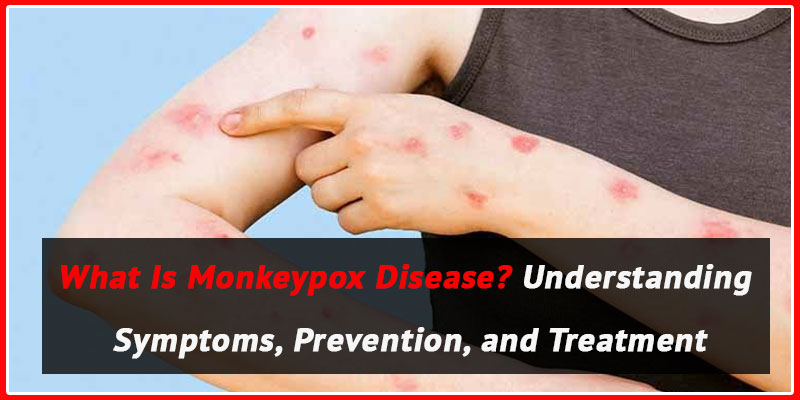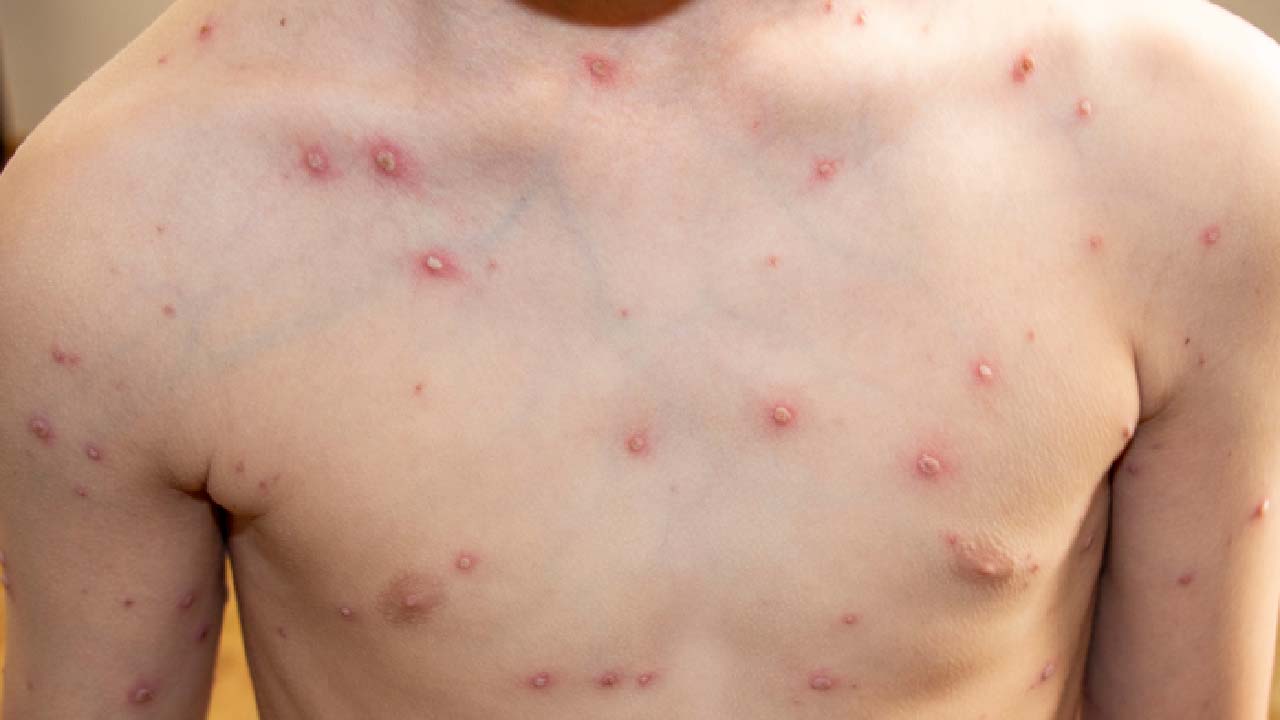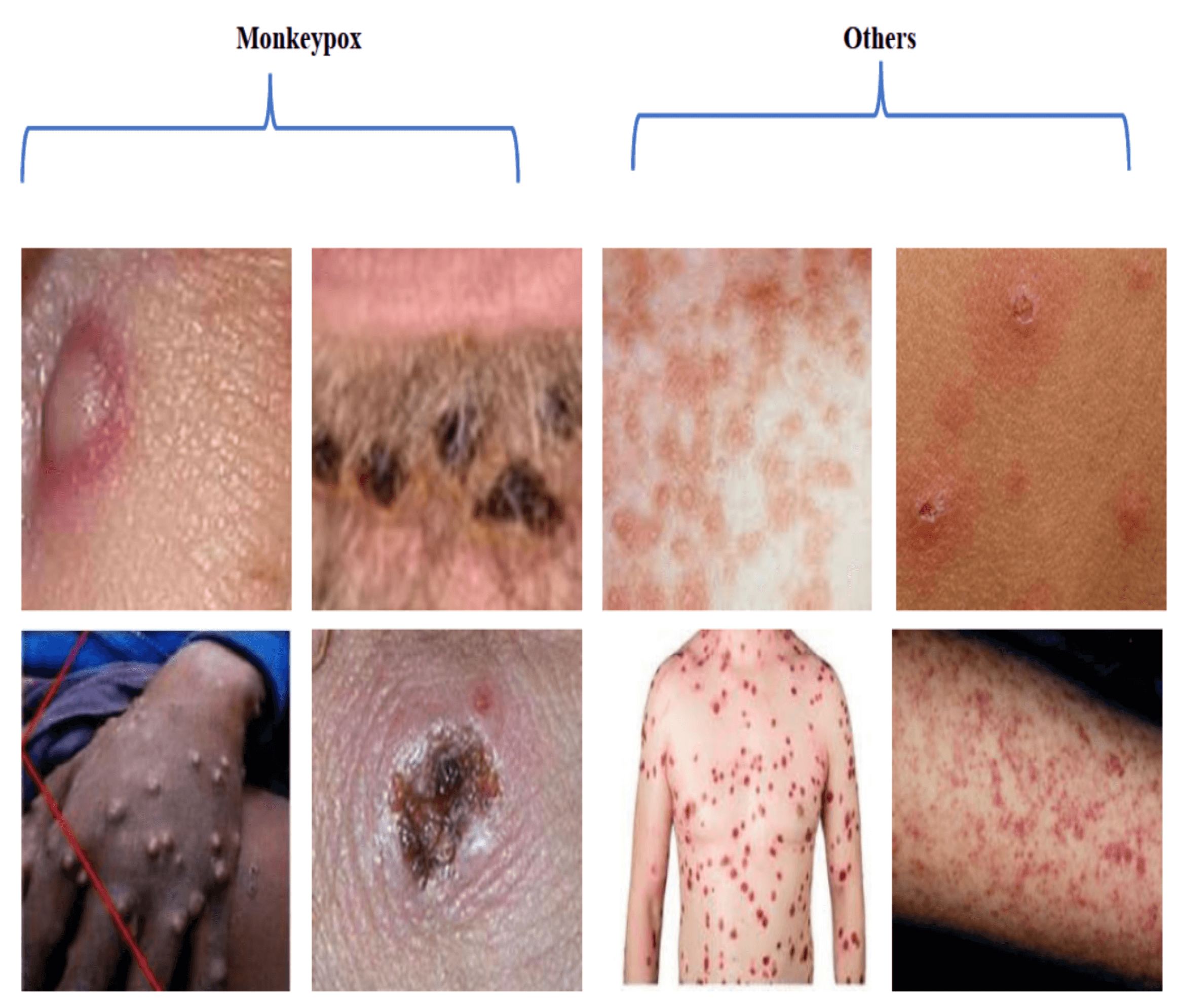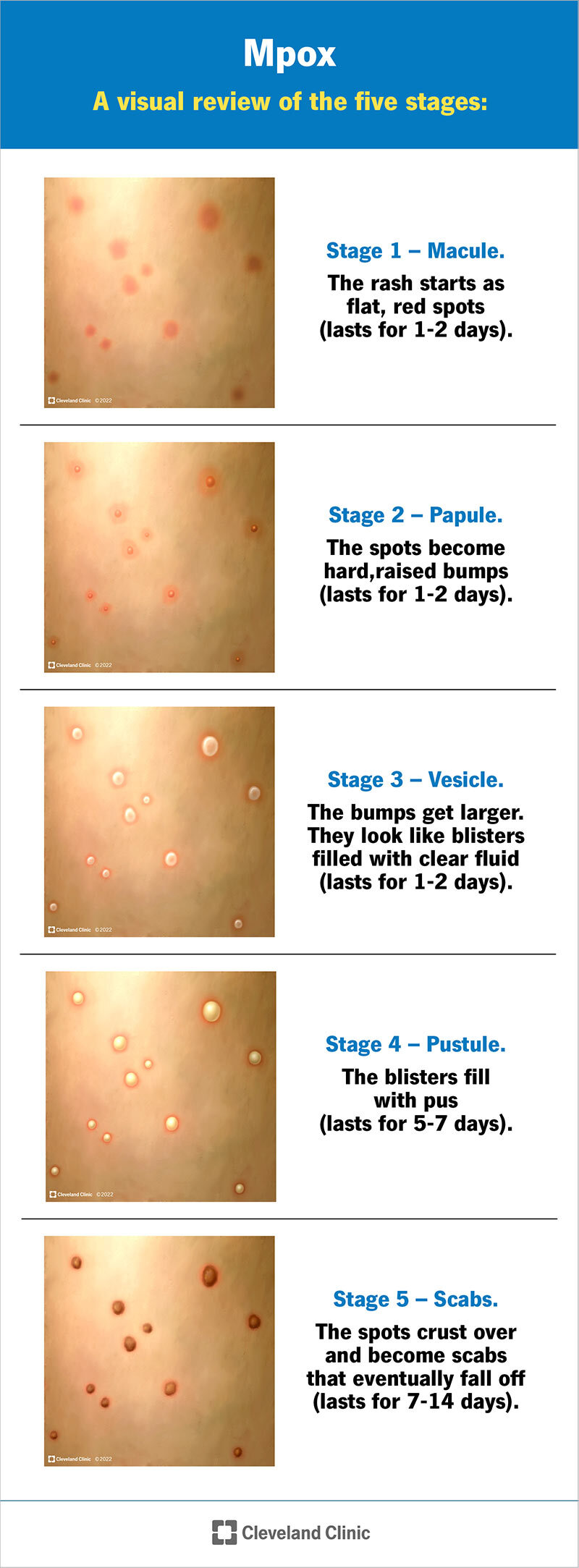Monkeypox Disease: Understanding the Symptoms, Prevention, and Treatment
In recent months, there has been a significant increase in monkeypox cases around the world, making it essential for everyone to be aware of this viral disease.

Monkeypox, which was recently renamed mpox, is a viral disease that is related to smallpox and can cause a range of symptoms, some of which can be severe.
In this article, we will discuss what monkeypox is, its historical background, and the differences between the recent global outbreak and the endemic presence of the disease in Central and West Africa.
What is monkeypox?
Monkeypox is a viral disease that is caused by the monkeypox virus. It is a member of the Poxviridae family, which includes other viral diseases such as smallpox and cowpox. Monkeypox is a zoonotic disease, which means that it can be transmitted from animals to humans.

What is Monkeypox Virus?
The Monkeypox virus is a species of double-stranded DNA virus that causes mpox disease in humans and other mammals. It belongs to the orthopoxvirus genus, closely related to variola, cowpox, and vaccinia viruses. The virus is oval-shaped with a lipoprotein outer membrane and has a genome of approximately 190 kb.
Monkeypox virus is zoonotic, transmissible between animals and humans through direct contact with lesions or bodily fluids.
What is Monkeypox Disease?
Monkeypox disease is a viral disease that is related to smallpox, which was eradicated in 1980. The monkeypox virus is a double-stranded DNA virus that causes a range of symptoms, including fever, headache, muscle aches, and a rash that can appear on the face, hands, and feet. The rash can be painful and can last for several weeks. In some cases, monkeypox can cause severe symptoms, including pneumonia, sepsis, and encephalitis.

Historical Background of Monkeypox
Monkeypox was first discovered in 1958 in laboratory monkeys in Denmark. The virus was named monkeypox because it was first identified in monkeys. However, it is now known that monkeypox is primarily found in rodents and other small mammals.
The first human case of monkeypox was reported in 1970 in the Democratic Republic of Congo. Since then, the disease has been reported in several other African countries, including Nigeria, Cameroon, and the Central African Republic.
Signs and Symptoms of Monkeypox
Monkeypox, a rare viral disease similar to smallpox, presents with various signs and symptoms:

Common Symptoms Of Monkeypox
- Rash: A rash is a common symptom of monkeypox disease, starting on the face and spreading to other parts of the body. The rash goes through several stages, starting with flat, red spots that progress to raised bumps, fluid-filled blisters, and finally scabs that fall off after about two weeks.
- Lymphadenopathy: Swollen and tender lymph nodes, particularly in the neck, armpits, and groin, are a common symptom of monkeypox disease.
The incubation period for monkeypox disease is usually 7-14 days, but can range from 5-21 days. The initial symptoms are similar to those of other viral infections and include fever, headache, muscle aches, and fatigue.
Within 1-3 days of the onset of fever, a rash develops, starting on the face and spreading to other parts of the body. The rash goes through several stages, starting with flat, red spots that progress to raised bumps, fluid-filled blisters, and finally scabs that fall off after about two weeks.
Lymph nodes, particularly in the neck, armpits, and groin, may also become swollen and tender.

Stages of the Rash
The progression of the monkeypox rash involves distinct stages:
- Prodromal Phase:
Before the rash appears, individuals may experience flu-like symptoms such as fever, malaise, headache, sore throat, or cough.
- Maculopapular Stage:
The rash starts as flat, red spots that become raised and fill with fluid, evolving into pustules before forming scabs.
- Pustular Stage:
Lesions develop into pustules, which then scab over and eventually desquamate.
- Scabbing and Healing:
The scabs fall off, leaving areas of lighter or darker skin, and once a fresh layer of skin forms, the person is no longer contagious.
Other Common Symptoms
In addition to the rash, monkeypox commonly presents with:
- Fever
- Headache
- Muscle Aches
- Swollen Lymph Nodes
- Respiratory Symptoms like sore throat, nasal congestion, or cough.
When to See a Doctor
It is crucial to seek medical attention if experiencing symptoms, especially after potential exposure to monkeypox. Early diagnosis and management are essential for monitoring the condition, relieving symptoms, preventing dehydration, and addressing any secondary bacterial infections that may arise.
Monkeypox Transmission and Risk Factors
Monkeypox is a viral zoonosis that can spread through various modes of transmission. The primary mode of transmission is through direct contact with infected animals or humans, particularly through bodily fluids such as saliva, respiratory excretions, or cutaneous or mucosal lesions
Animal-to-human transmission often occurs due to contact with infected animals, especially rodents, which are believed to be the primary reservoir of the virus
Modes of Transmission
- Animal-to-human transmission often occurs due to contact with infected animals, especially rodents, which are believed to be the primary reservoir of the virus.
- Human-to-human transmission is less common but can still occur through close contact with infected individuals, particularly through respiratory droplets during prolonged face-to-face contact or through contact with lesions of an infected person.
- Contaminated objects or surfaces, such as bedding, clothing, or eating utensils, can also facilitate the spread of the virus among individuals of the same household.
- There has been some discussion regarding the potential for monkeypox to spread through casual airborne transmission, but current evidence suggests that this is not a primary mode of transmission. However, the virus may be found in droplets like saliva or respiratory secretions that drop out of the air quickly, and close, face-to-face contact can facilitate its spread
- Certain groups may have a higher risk of contracting monkeypox, including immunocompromised individuals and healthcare workers who are in close contact with infected patients.
It is important to debunk misconceptions about monkeypox transmission and emphasize that the virus is not primarily spread through casual airborne transmission or short periods of shared airspace. Instead, direct contact with infected individuals or contaminated materials poses the most significant risk for monkeypox transmission.
Prevention and Treatment For Monkeypox
Preventive Measures:
- Avoiding Close Contact:
It is crucial to avoid close contact with infected individuals and animals to prevent the transmission of monkeypox.
- Proper Hand Hygiene:
Practicing proper hand hygiene is essential to reduce the risk of contracting the virus, especially after handling potentially contaminated materials.
- Safe Handling of Contaminated Materials:
Ensuring the safe handling of potentially contaminated materials can help prevent the spread of monkeypox.
Potential Role of Vaccination:
Vaccination plays a significant role in preventing monkeypox. Smallpox vaccination can provide defense against the disease, as smallpox vaccines have shown a protective effect against the monkeypox virus.
Monkeypox Treatment Options:
- While there is no specific treatment approved for human monkeypox virus infection, supportive care can help manage symptoms. Most cases of monkeypox are mild and self-limiting, with supportive care being typically sufficient.
- In severe cases or for specific patient populations like immunocompromised individuals, antiviral medications such as tecovirimat, brincidofovir, and cidofovir, along with vaccinia immune globulin intravenous (VIGIV), can be considered as treatment options.
Diagnostic Methods For Monkeypox Disease
Monkeypox disease is diagnosed through laboratory tests that detect the virus in blood, skin lesions, or other bodily fluids. These tests may include polymerase chain reaction (PCR) assays, antigen detection tests, or virus isolation in cell culture.
Healthcare providers should be alert to the possibility of monkeypox in patients with a fever and rash, especially if they have recently traveled to areas where the disease is endemic or have had contact with infected animals or humans.
Frequently Asked Questions (FAQ's)
Q. What is MPOX?
Monkeypox (MPOX) is a rare viral disease that belongs to the same family as smallpox. It primarily occurs in Central and West Africa, with symptoms similar to smallpox but generally milder.
Q. What does monkeypox look like?
Monkeypox typically presents with a rash that starts on the face and spreads to other parts of the body. The rash evolves from macules to papules, vesicles, and pustules, resembling smallpox lesions but less severe.
Q. What are the symptoms of monkeypox?
The symptoms of monkeypox include fever, headache, muscle aches, backache, swollen lymph nodes, and a characteristic rash. Some individuals may also experience chills, sweats, fatigue, and respiratory symptoms like cough and shortness of breath.
Q. What are the first signs of monkeypox?
The first signs of monkeypox often include fever, headache, muscle aches, and fatigue. As the disease progresses, a rash develops, starting on the face and spreading to other parts of the body, accompanied by other symptoms like swollen lymph nodes.
Q. How is Monkeypox Transmitted?
Monkeypox spreads through close physical contact with an infected person or their belongings, such as clothing, bedding, or towels. It can also be contracted through respiratory droplets or prolonged contact with contaminated possessions[3].
Q. Who is Most at Risk from Monkeypox?
While anyone can contract monkeypox, certain populations are more susceptible, including gay, bisexual, transgender, and gender nonconforming communities, older adults, children under 8, and people who are pregnant or immunocompromised[3].
Q. How is Monkeypox Prevented and Transmission Stopped?
Preventing monkeypox involves avoiding skin-to-skin or face-to-face contact with infected individuals, practicing safe sex, and cleaning hands regularly. Contact tracing and isolation are crucial for controlling outbreaks[3].
Q. What is the Role of Institutions of Higher Education in Monkeypox Prevention?
Institutions of higher education can help prevent monkeypox by providing information to different communities and channels, avoiding stigmatizing messages, and encouraging fact-based communication[5].
Q. What Should Individuals with Monkeypox Do to Prevent Spreading it to Others?
Individuals with monkeypox should isolate, cover their rashes, avoid close contact with others, and clean and disinfect surfaces after using shared spaces[5].
Q. What are the Treatments Available for Monkeypox?
Antiviral medications exist to treat monkeypox, which may be appropriate for some people, especially those at higher risk for severe disease outcomes[5].
Conclusion
Monkeypox can cause some discomfort, but the good news is it usually resolves on its own within a few weeks. By understanding the symptoms, transmission methods, and preventive measures, you're well on your way to staying safe. Remember, avoiding close contact with infected individuals and practicing good hygiene are key.
For the latest updates and detailed information, reliable sources like the World Health Organization (WHO) and Centers for Disease Control and Prevention (CDC) are valuable resources. Don't hesitate to check them out.
